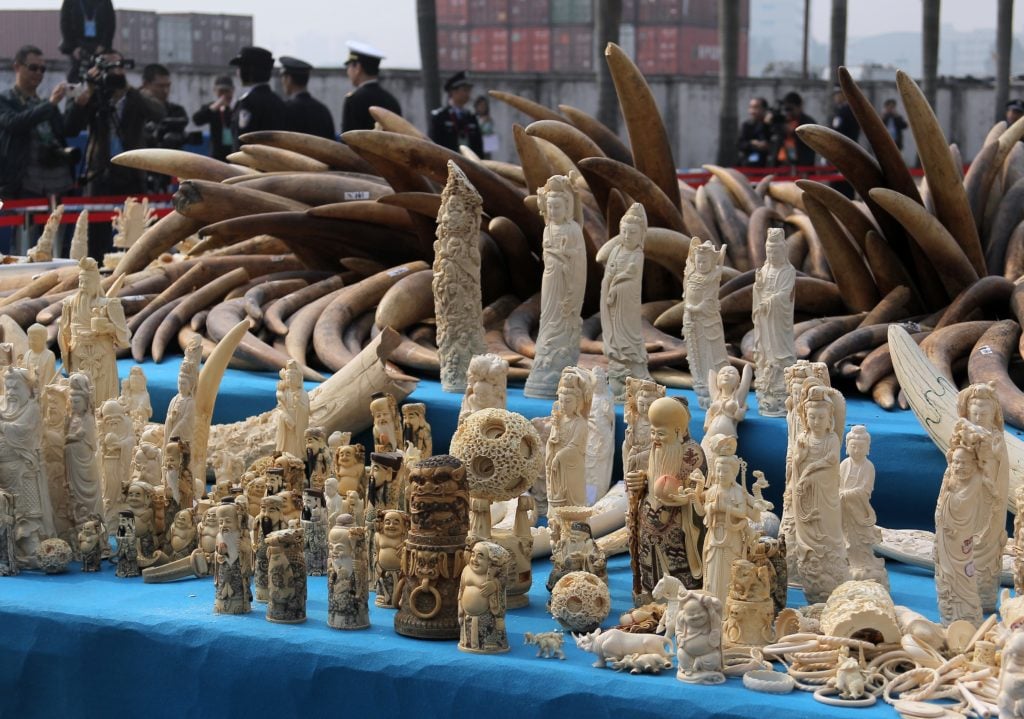Law & Politics
Antiques Trade Groups Sue to Strike Down New York’s ‘Restrictive’ Ivory Law
Dealers argue that state law conflicts with federal rules.

Dealers argue that state law conflicts with federal rules.

Eileen Kinsella

Two art trade organizations are suing New York State over the right to sell antique ivory. In an unusual case, Art and Antique Dealers League of America and the National Art and Antique Dealers Association of America have brought a joint lawsuit against an official of the New York State Department of Environmental Conservation (DEC) over a state ban that limits the selling of ivory-based antiques. The dealers are seeking a permanent removal of the law, which has significantly tighter restrictions than current federal laws.
The suit specifically targets Basil Seggos, the commissioner of the New York State Department of Environmental Conservation. The groups, represented by attorney Alan Sash, argue that, under Seggos, the DEC has taken “inconsistent positions” on the interpretation of the 2014 statute, which regulates the sale of ivory and carries criminal and civil penalties.
The bulk of the complaint, however, centers on the conflict between state and federal law. Though US law generally bans the sale of ivory, it provides for two exceptions: Antique ivory older than 100 years may be sold, and non-antique pieces containing a “de minimus” amount of ivory—defined as 50 percent or less—are also fair game. The New York law, however, is more restrictive. It requires all antique ivory to contain less than 20 percent ivory. And it bans the sale of non-antique ivory outright.

NYS DEC Commissioner Basil Seggos.
Given that discrepancy, a person may be in compliance with federal law and still “risk criminal prosecution and civil penalties under state law,” according to the complaint. “Thus New York law makes illegal what the federal government specifically declares as lawful conduct.”
The dealers argue that removing the state law will end the “uncertainty, insecurity, and controversy,” that prompted the action in the first place, according to the court papers.
In addition to citing conflicts between state and federal laws, the complaint invokes provisions of the Endangered Species Act, noting that a state can only enact more restrictive laws regarding endangered or threatened species if the animals are alive and located within its jurisdiction. “Since the African elephant is not indigenous or located within New York, the state may not enact stricter laws than those enacted by the federal government,” the suit claims.
Neither Seggos nor the office of State Attorney General Eric Schneiderman, which is reportedly representing him, immediately responded to artnet News’s request for comment.
In an email to artnet News, Sash described the aims of the complaint, pointing out that his clients are opposed to the hunting of ivory:
This lawsuit is to preserve and protect the lawful trade of antique ivory (defined as over 100 years old) in New York. The lawful trade of antique ivory is protected by federal law and we are asking that the State of New York respect such lawful commerce. To be very clear, we are opposed to the current hunting of ivory and disapprove of ivory trophies. This lawsuit is about preserving the trade of antique ivory crafted more than 100 years ago when the species was not threatened and the craft had historical, social, and artistic value.